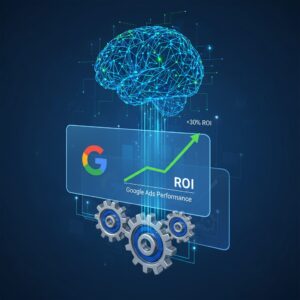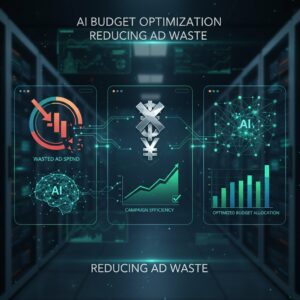
You can start a digital agency today with almost no overhead. The barrier to entry has dropped dramatically in the past 18 months.
AI tools have changed how agencies deliver content and design work. You no longer need a team of ten people to serve clients professionally. One person with the right tools can produce work that used to require specialists in writing, design, video editing, and marketing.
I’ve watched small agencies struggle with overhead costs for years. Salaries, office space, and software licenses eat into margins before you land your first client. That model is outdated.
The new model is lean. You work from anywhere. You use AI to handle repetitive tasks. You focus on strategy and client relationships while technology handles execution.
This isn’t theory. Agencies are already operating this way and winning contracts against larger competitors.
The Tools That Make It Possible
You need four categories of tools to run a complete digital agency.
Content creation tools handle writing. ChatGPT, Claude, and Jasper can draft blog posts, social media content, email campaigns, and website copy. These tools work fast. What took a writer four hours now takes 30 minutes with editing.
You maintain quality by providing clear instructions and editing output. The AI handles research and first drafts. You add strategy and polish.
Design tools have evolved beyond templates. Midjourney and DALL-E create original images. Canva now includes AI features that generate layouts based on your content. Figma has AI plugins that speed up interface design.
I tested these tools by creating a complete brand identity in one afternoon. Logo variations, color palettes, social media templates, and presentation decks. The output was professional enough to present to paying clients.
Video tools like Runway and Descript let you edit video by editing text. You can remove filler words, add captions, and create clips without learning complex software. Synthesia creates videos with AI presenters if your client needs talking head content.
Project management becomes simpler with AI assistants built into tools like Notion and ClickUp. They can summarize meetings, create task lists, and track project status without manual updates.
The total cost for all these tools runs between 200 and 400 dollars monthly. That’s less than one day of salary for a junior employee.
Building Your Service Offering
Start with services you can deliver consistently. Don’t promise everything on day one.
Content packages work well as a foundation. Offer blog writing, social media management, or email marketing. Use AI to produce drafts quickly, then add your expertise in strategy and audience understanding.
One content package might include four blog posts, 20 social media posts, and two email newsletters per month. You can deliver this in 15 to 20 hours of work with AI assistance.
Design services should focus on specific deliverables. Brand identity packages, social media graphics, or presentation templates are easier to scope than open ended design work.
I recommend bundling content and design together. Clients need both. When you provide integrated services, you become more valuable and harder to replace.
Pricing should reflect value, not hours. If you help a client generate leads or build their brand, that’s worth thousands of dollars even if AI helps you deliver faster.
Start with monthly retainers between 2000 and 5000 dollars. This covers ongoing content and design work with clear deliverables each month. Retainers create predictable income and long term client relationships.
Project based work should start at 3000 dollars minimum. Anything less doesn’t justify the sales effort and project management overhead.
Finding Your First Clients
You don’t need a website or business cards to land your first client. You need conversations with people who have problems you can solve.
Your network is your fastest path to revenue. Make a list of 50 people you know in business. This includes former colleagues, friends who run companies, people you’ve met at events, and professional connections.
Send personal messages to ten people per week. Don’t pitch immediately. Ask about their business and current marketing challenges. Listen for problems that match your services.
When someone mentions they need help with content or their website looks outdated, you have an opening. Share that you’ve started an agency focused on solving exactly that problem.
Cold outreach works if you make it personal. Find businesses with obvious needs. A company with no social media presence, outdated branding, or a blog that hasn’t been updated in months.
Email the owner or marketing manager. Point out the specific gap you noticed. Explain how you can fix it. Include one or two examples of similar work.
Keep the message under 100 words. Busy people don’t read long emails from strangers.
Partnerships with other agencies create another client source. Many established agencies need overflow capacity. They win more work than they can handle in house.
Reach out to agencies that offer complementary services. If they focus on web development, they need content and design partners. If they do branding, they might need ongoing content support for clients.
Position yourself as a reliable partner who can handle specific project types. Start with small projects to prove your work quality, then negotiate better terms as the relationship develops.
Scaling Without Losing Quality
Growth in an AI powered agency looks different than traditional scaling.
You don’t hire employees immediately. Instead, you invest in better tools and processes. Upgrade to professional versions of software. Build template libraries that speed up common deliverables. Create standard operating procedures for each service type.
When one person hits capacity at 30 to 40 client hours per week, you have options. Raise prices to work with fewer, higher paying clients. Automate more of your workflow to increase output. Or bring on a contractor for specific tasks.
Contractors work better than employees in the early stages. You pay for output, not hours. You scale capacity up or down based on client demand. You avoid payroll taxes and benefits overhead.
Find contractors who already use AI tools in their work. They’ll match your productivity expectations and delivery speed.
Quality control becomes critical as you grow. Create a review process for all client deliverables. Even with AI assistance, human judgment determines whether work meets professional standards.
I use a simple three step review. First, check that deliverables match the project brief. Second, verify that tone and style fit the client’s brand. Third, test all technical elements like links, formatting, and image quality.
This review takes 15 to 30 minutes per deliverable but prevents client disappointment and revision requests.
Client communication separates successful agencies from struggling ones. Respond quickly. Provide updates before clients ask. Be honest about timelines and capabilities.
Set up a simple client portal using tools like Notion or ClickUp. Clients can see project status, review deliverables, and provide feedback in one place. This reduces email clutter and makes you look organized.
The digital agency model has changed. You can build a profitable business faster and leaner than ever before. The tools exist. The market needs help. Your job is to connect the two.
Start small. Deliver excellent work for your first three clients. Build systems as you go. Scale when you have consistent demand and proven processes.
The opportunity is real. The question is whether you’ll take action.
Please check our Business Tips https://thoughts.business/category/business-tips/
Please check our partner site – Why Invest? https://whyinvest.info/





